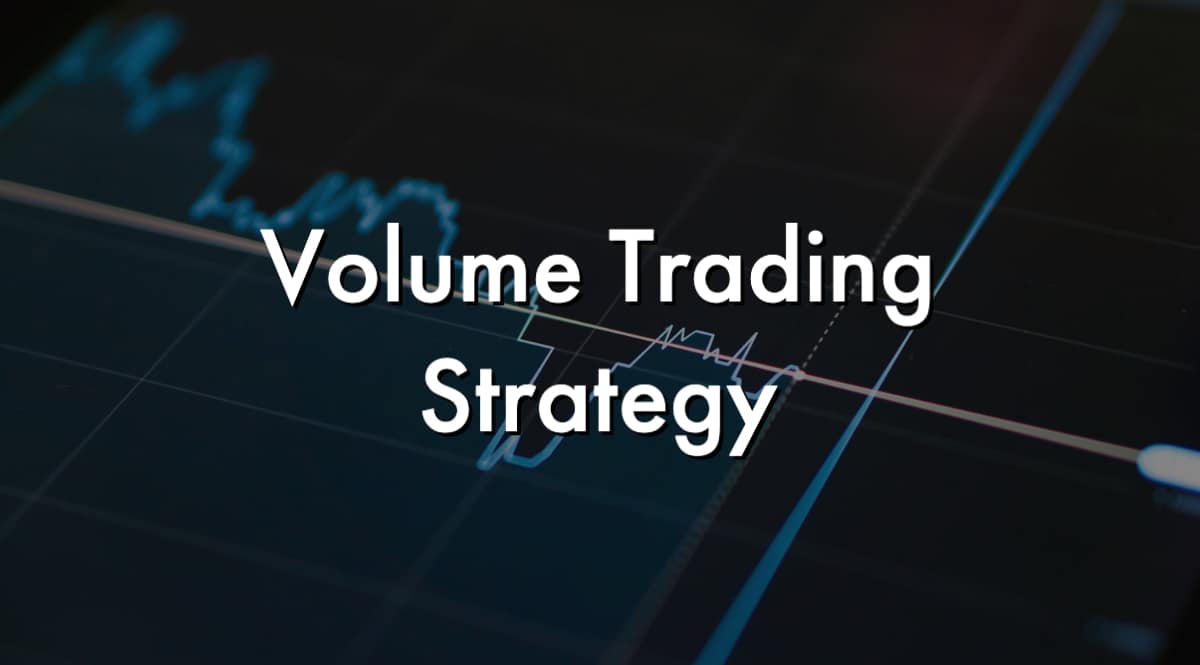What is a volume trading strategy, and How to use it?
One of the basic ways to succeed in trading is keenly following and analyzing where the price is heading. However, knowing the trading volumes of a specific asset is also well-known among the traders. How does volume trading strategy work? How to create a good trading strategy with just price and volume? These and many other questions related to volume trading strategy will be answered within the following lines.
What is a volume trading strategy?
Volume strategy in trading refers to a trading approach that utilizes volume data as a primary factor in trading decisions. It involves analyzing the trading volume of an asset to gain insights into potential price movements. Rather than indicating the market’s direction, the volume shows you the strength of the market move.
However, the volume indicator is, in most cases, considered as a secondary indicator for traders. You should use volume indicators to confirm your market analysis and not a foundation of your trading strategy.
The number of assets, be it currency pairs, stocks, or cryptos, sold or bought daily is how traders determine money flow. Money flow indicates an asset’s supply and demand and price action. It, therefore, helps to determine your entry points.
High volume points out there is increased interest in an asset. In combination with a move higher in price, it’s a clear signal of upward momentum. Monitoring the volume ensures that the trader is on the right side of the trade.
The Importance of Volume in Technical Analysis
Trading volume is a key indicator for technical analysis. Any trader who wants to act professionally will look at asset price but also pay a lot of attention to volume.
Volume in technical analysis is a relevant indicator. It tells us about the number of purchases and sales of a certain financial asset on the market. This indicator tells us about the importance of the asset in trading during a given period.
What is the volume in technical analysis?
Financial markets are places where traders buy and sell assets of different types. It can be stocks, currencies, futures or options, and many more.
When a buyer accepts the price offered by the seller for a given quantity of an asset, a transaction is made. If, during a day, 10 transactions were made on this asset, the volume in technical analysis for this period will be 10.
There is always a relationship between asset price and volume in technical analysis. When the volume increases, the price tends to increase. This tells us that during this period, there are more traders willing to buy an asset. If the volume is low, prices may depreciate to attract buyers.
Using Volume Charts in Volume Trading Strategy
Volume indicators in technical analysis act as a confirmation – or not – of the price movement that is taking place.
It is important to note that market trading volumes are technical indicators as well as liquidity indicators. A greater number of transactions increases the liquidity of that market or asset.
It is for these reasons that traders need a convenient and quick way to recognize volume in technical analysis. Most of them use candlestick charts. This type of graph allows you to see the evolution of the volume of transactions.
Thanks to different types of charts, it is also possible to align the volume in the technical analysis with the support and resistance levels. If an asset is showing high buying volume, we may be in the presence of a reversal of the support level.
On the other hand, to confirm a reversal at the resistance level, an increase in selling volumes could give us an accurate clue.
Another example of the importance of volume in technical analysis. A significant increase in buying volumes of an asset can confirm a breakout of resistance levels.
How to Use volume – key aspects of volume strategy in trading:
Volume Analysis: Traders using a volume strategy examine the volume of trades executed for a particular asset within a given timeframe. Volume is the number of shares, contracts, or units traded during a specific period, such as a day or an hour. Traders analyze how volume changes over time and in relation to price movements.
Confirmation of Price Movements: Volume is often seen as a confirmation tool for price movements. In an uptrend, the increasing volume may indicate strong buying interest, validating the upward price movement. In downtrend, decreasing volume during an uptrend could suggest weakening buying pressure. Similarly, volume can confirm or invalidate price patterns, breakouts, and reversals.
Volume Patterns: Traders using a volume strategy look for specific volume patterns to identify potential trading opportunities. Some common volume patterns include volume spikes, where there is a sudden surge in trading activity. Other patterns include volume divergences, where volume trends deviate from price trends, potentially indicating a trend reversal.
Volume-based Indicators: Traders may employ volume-based indicators to enhance their volume strategy. For example, the On-Balance Volume (OBV) indicator tracks the cumulative volume flow, helping identify buying or selling pressure. The Volume Weighted Average Price (VWAP) calculates the average price weighted by volume, providing insights into the average price levels at which trading occurred.
Liquidity Assessment: Volume data can also help assess market liquidity, especially in less liquid assets or during specific time periods. Low volume may lead to wider bid-ask spreads and increased slippage, impacting execution quality. Traders consider volume when selecting assets to trade and adjust their strategies accordingly.
News and Events Impact: Volume strategy traders also pay attention to volume surges triggered by news releases, earnings reports, or other significant events. Increased volume during these events can indicate heightened market participation and potential trading opportunities.
How to use volume indicators?
Volume in the technical analysis should always be accompanied by other indicators. If the price of an asset – for example, a stock – is rising, this trend must be confirmed.
Those who rely on technical analysis for their trading decisions look at price. However, if the trading volume does not increase, it means that traders are not sure that the price will continue to increase. It could be a short-term hedging move.
In another scenario, an increase in the price of the asset can trigger an increase in trading volume. In these cases, the volume in the technical analysis can help us know if we are overbought. Traders often develop trading strategies for these scenarios.
Something similar happens if the price is falling. Rotation is increasing, and we may be oversold. Traders prepare to buy before a reversal begins.
Volume trading strategy – Volume trading indicators
Volume Price Trend (VPT) Trading Indicator
The Volume Price Trend (VPT) is a technical trading indicator that combines price and volume data to provide insights into the strength and direction of price movements. It was developed by Buff Dormeier in the 1990s. The VPT attempts to measure the correlation between volume and price changes, aiming to identify accumulation or distribution patterns in the market.
The VPT is calculated using the following steps:
Determine the percentage change in price from the previous period (usually day or bar).
Multiply the percentage price change by the volume of the current period.
Add or subtract the result from the previous VPT value to obtain the current VPT value.
The VPT indicator can be displayed as a line chart, typically plotted alongside the price chart. The line moves up or down based on the calculations mentioned above.
Traders can use the VPT indicator in various ways.
Traders may compare the direction of the VPT line with the price trend to validate the strength and sustainability of a price move.
Reversal signals can be derived from divergences between the VPT line and price chart, potentially indicating trend reversals and providing opportunities for entry or exit.
The VPT can be used as a filter alongside other technical indicators to confirm or invalidate trading signals generated by other indicators or strategies.
Chaikin Money Flow
Chaikin Money Flow is a tool that analyzes the relationship between prices and volume in the market. It looks at how volume changes when prices reach the upper or lower part of their daily range and assigns a value to indicate the strength of this relationship.
When closing prices are in the upper range and volume is increasing, the values assigned will be high. On the other hand, if closing prices are in the lower range, the values will be negative. This tool can be used as a short-term indicator due to its oscillating nature, but it is more commonly used to identify divergence in the market.
On-Balance Volume Indicator
The concept behind OBV is rooted in the differentiation between sophisticated investors, such as institutional investors, and less knowledgeable retail investors.
When mutual funds and pension funds start purchasing a particular asset that retail investors are selling, the trading volume may increase while the price remains relatively steady.
Eventually, the increased volume pushes the price upwards. At this stage, larger investors begin to sell their holdings, while smaller investors start buying in.
Despite being represented on a price chart and measured numerically, the actual numerical value of OBV is not important. The indicator itself is cumulative, and its value is determined by a fixed time interval starting from a specific date. Therefore, the numerical value of OBV is arbitrary and depends on the chosen start date.
Experts analyze the volume data on the On-Balance Volume (OBV) indicator to monitor the activity of big institutional investors.
They view disparities between volume and price as an indication of the dynamic between smart and average investors, aiming to identify chances to make profitable purchases against prevailing market trends. For instance, institutional investors might cause the price of an asset to rise and then sell their holdings once other investors follow suit.
Volume by Price
Typically, volume is displayed at the bottom of a chart. However, employing the volume-by-price approach allows traders to gain insight into the volume of trades executed at different price levels. Instances of significant Volume can be utilized to pinpoint areas where knowledgeable investors have chosen to actively pursue a position.
Active traders often rely on substantial volume movements at crucial price levels to identify significant support and resistance zones, which can, in turn, generate valuable buying and selling signals when combined with other indicators.
Volume Trading Strategy – Bottom Line
The volume trading strategy in trading shows you the way the market moves. Also, it’s a great way to determine the money flows. As smart money tends to hide its activities, using trading volume indicators, you can trace their footprints. Finally, for the best results, you should combine volume with other technical indicators so you can precisely determine entry and exit for your trades.
One of the basic ways to succeed in trading is keenly following and analyzing where the price is heading. However, knowing the trading volumes of a specific asset is also well-known among the traders. How does volume trading strategy work? How to create a good trading strategy with just price and volume? These and many other questions related to volume trading strategy will be answered within the following lines.
The post What is a volume trading strategy, and How to use it? appeared first on FinanceBrokerage.


































